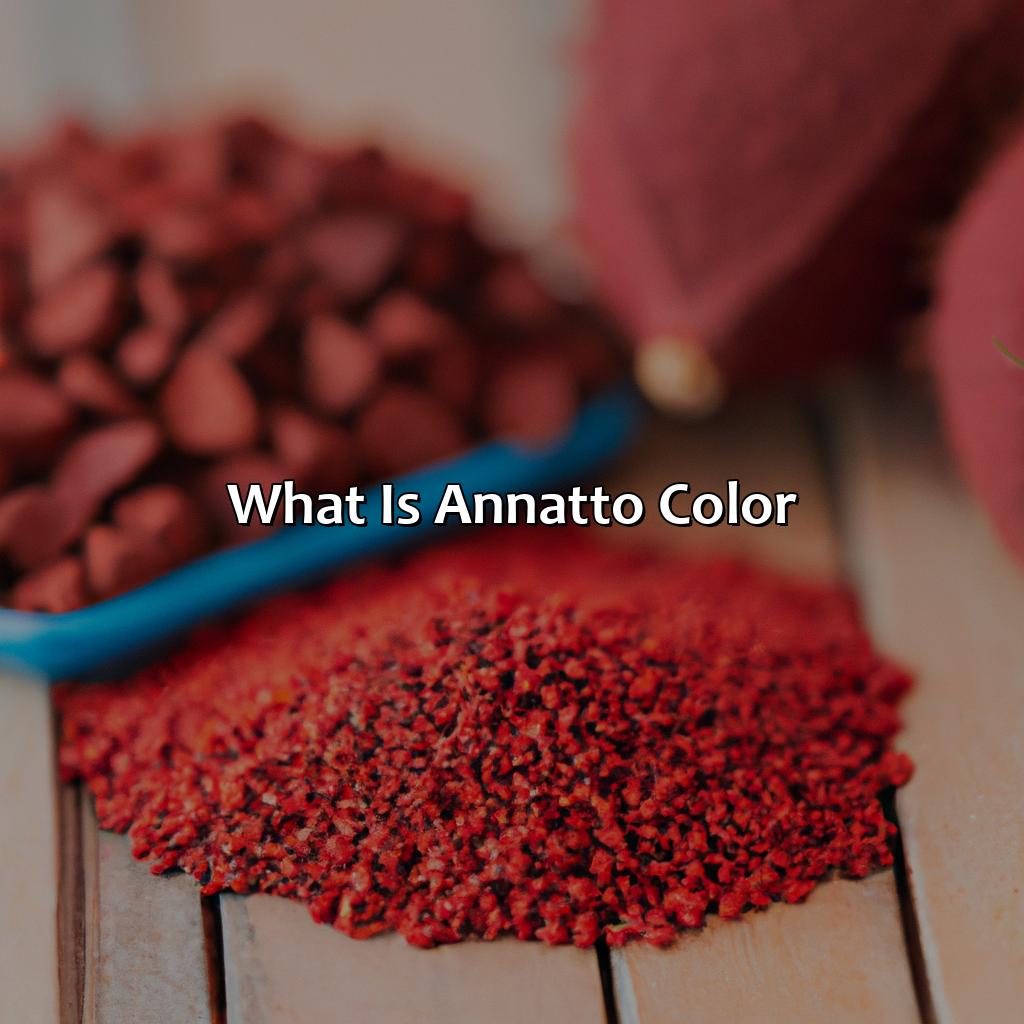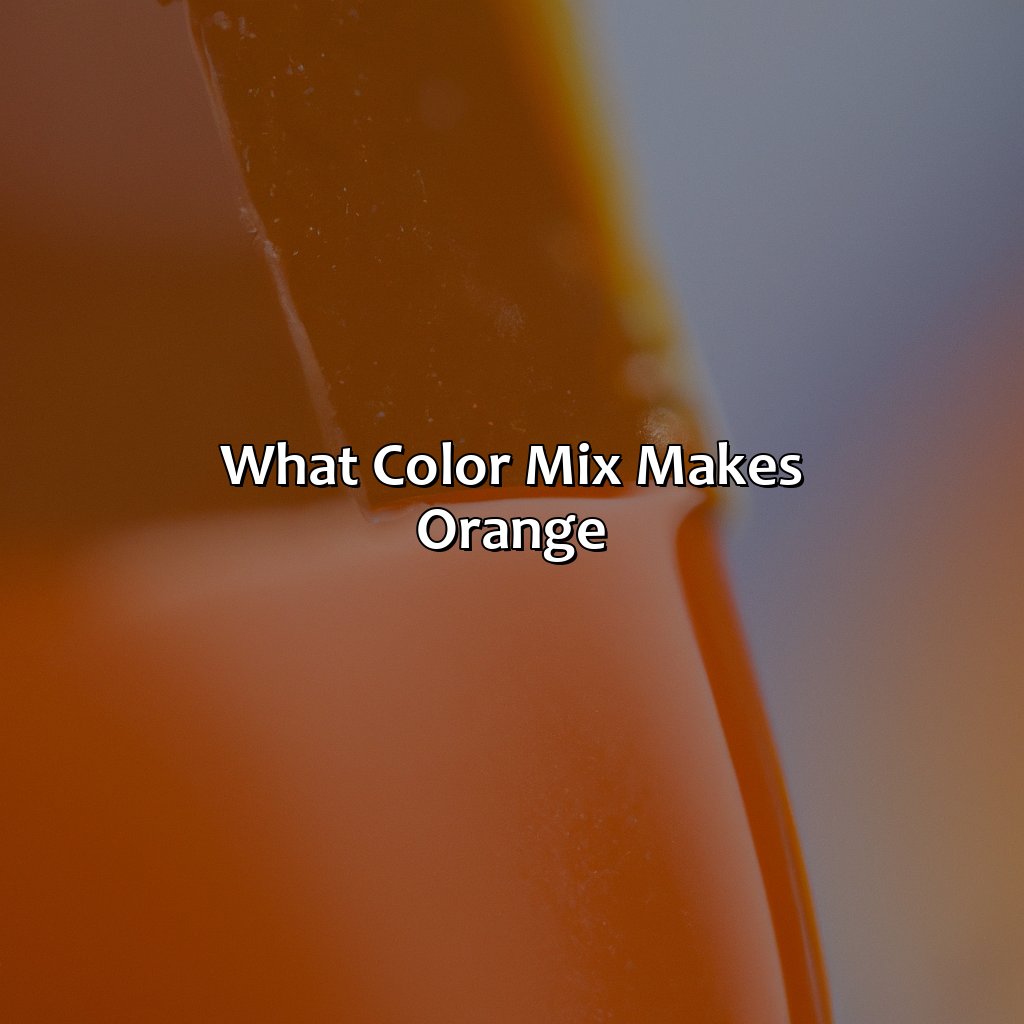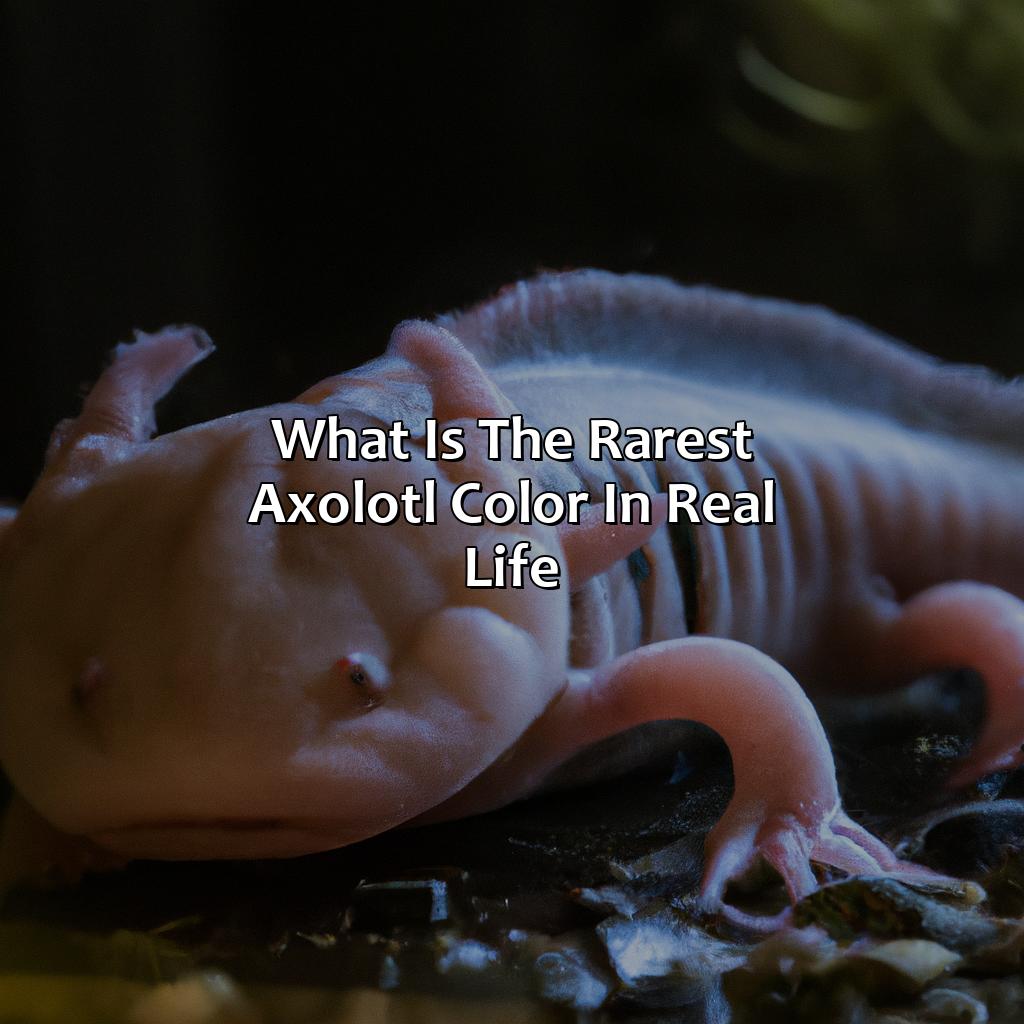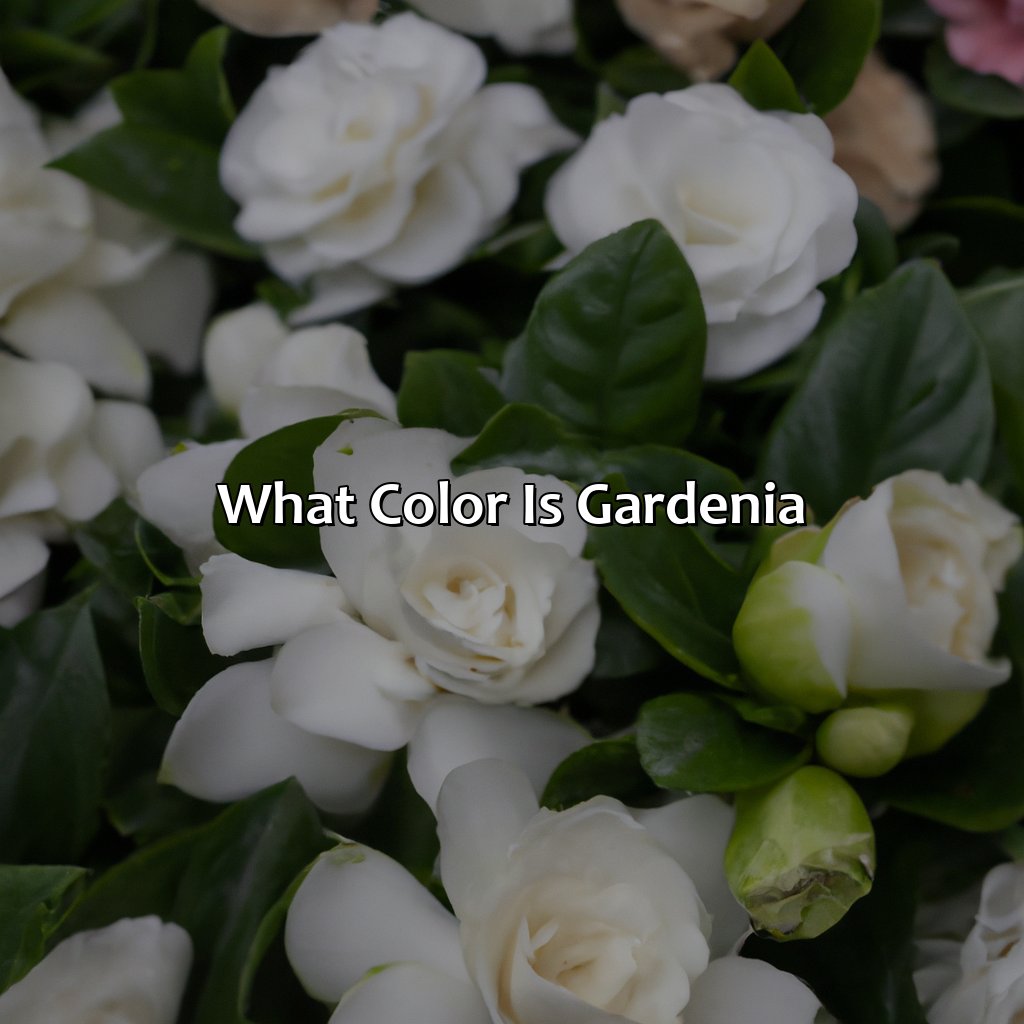Key Takeaway:
- Annatto color is derived from the seeds of the annatto plant and has been historically important in various cultures for food and medicinal purposes.
- Annatto color is a natural food color and dye, and is commonly used in the food industry for its yellow and orange hues, in products such as cheese, butter, oil, paste, and seasoning.
- Annatto color has antioxidant and anti-inflammatory properties, and has been used for medicinal purposes to treat various ailments, such as hypertension, diabetes, and skin infections.
Overview of Annatto Color
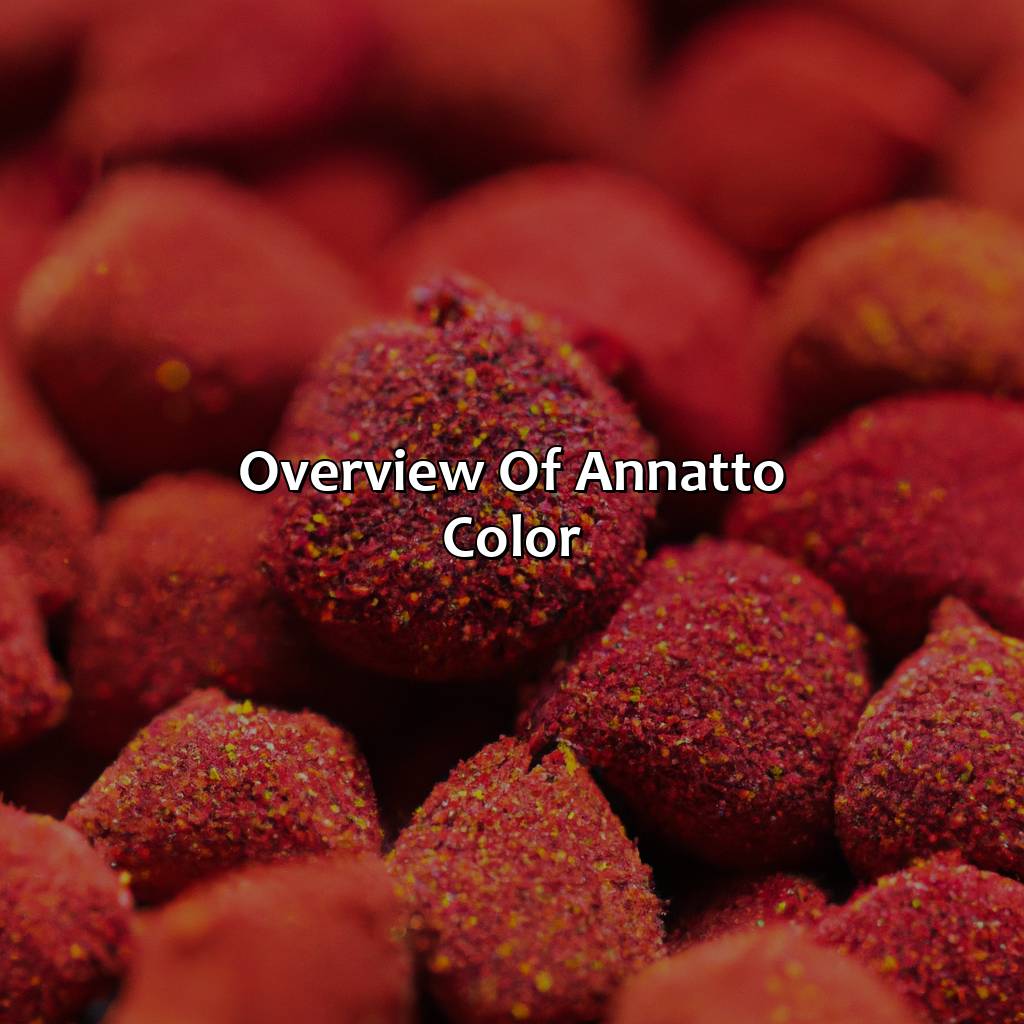
Photo Credits: colorscombo.com by Matthew Perez
Annatto color is a natural dye derived from the seeds of the achiote shrub. It is widely used in food, cosmetics, and pharmaceuticals due to its vibrant orange-red color.
| Aspect | Description |
| Source | Derived from the seeds of achiote shrub |
| Color | Vibrant orange-red |
| Applications | Food, cosmetics, pharmaceuticals |
Annatto color has been utilized by indigenous tribes in South and Central America for traditional medicine and body painting.
A study by the Journal of Medicinal Food found that annatto seeds are rich in antioxidants, providing potential health benefits.
(Source: Journal of Medicinal Food)
What is Annatto Color?

Photo Credits: colorscombo.com by Eric Williams
Dive into the value of annatto color! Get to know this natural food coloring alternative, providing distinctive orange and yellow hues. Learn the definition of annatto color. Discover the background with its brief history. Understand its applications. We’ll help you understand it all!
Definition of Annatto Color
Annatto Color is a natural food coloring agent extracted from the seeds of the Achiote tree. It is used to impart a yellow to orange-red hue in various food and cosmetic products.
The primary pigment in Annatto color is bixin, which constitutes approximately 70-80% of its composition, while norbixin makes up around 20-30%.
Annatto Color has a long history of use in traditional Latin American cuisine, where it was primarily utilized as a spice and dye for textiles. It was more recently adopted by the food industry as a natural alternative to synthetic colorants.
Unique details about Annatto Color include its high antioxidants and anti-inflammatory properties due to the presence of carotenoids like norbixin and bixin. These compounds are known to enhance skin health, aid digestion and reduce inflammation in the body.
Suggestions for using Annatto color include incorporating it into sauces, dressings, dairy products, meat products (such as ham), butter/ margarine, and bakery goods among others. Additionally, one should keep in mind any sensitivities or allergies that may arise from using this natural coloring agent.
Annatto color has been used for centuries, even by ancient Mayans for makeup and body paint.
Brief History of Annatto Color
Annatto color has a rich heritage that dates back hundreds of years. Derived from the seeds of a tropical tree called Bixa orellana, it was extensively used by ancient Maya and Inca societies to adorn their bodies and dye fabrics. But it wasn’t until the 16th century that annatto color was introduced to Europe, where it caught the attention of Portuguese sailors who spotted locals using bright-red body paint in South America.
Today, annatto color is prevalent worldwide and continues to be widely used in food processing and cosmetics industries due to its excellent coloring properties. With a history as old as civilization itself, annatto color has gained its place in the modern world as an essential food ingredient for adding vibrant colors to various edible products.
Annatto color: the versatile ingredient adding some color to your life, from cheese to condiments.
Uses of Annatto Color

Photo Credits: colorscombo.com by Dennis White
We have two sub-sections to explore the various uses of Annatto color, specifically in the food and cosmetic industry. We’ll look at how it’s used in forms like paste, oil, seasoning, and more. Plus, we’ll cover the benefits of Annatto color as an ingredient and supplement. It can promote good health, and has medicinal properties too!
Food Industry
Annatto color plays a significant role in the food industry. Due to its natural and vibrant coloring properties, it is widely used as a food additive. The highly nutritious annatto seeds from the Bixa Orellana plant are utilized to obtain this colorant.
Below is a table showcasing the different uses of annatto color within the food industry:
| Type of Food Product | Role of Annatto Color |
|---|---|
| Dairy Products | Coloring agent |
| Processed Meats | Coloring and flavoring |
| Beverages | Coloring |
| Bakery Products | Coloring agent |
Additionally, annatto color has been linked with certain safety concerns, such as an increased risk for allergies and potential carcinogenic effects when used excessively.
Interestingly, the use of annatto as a coloring agent dates back to Mayan civilization where it was employed for body painting and dyeing fabrics. Its beneficial health properties also make it an attractive alternative to synthetic colorants.
Annatto color: the food industry’s secret ingredient for making everything look appetizing, whether it’s actually good for you or not.
Role of Annatto Color in Food Products
Annatto Color plays an essential role in the production of food products. It is used to give a yellow/orange color to cheese, butter, and many other dairy products. The natural extract from the Annatto plant has the ability to improve the visual appeal of food products without adding any flavors or significant nutritional content.
The addition of Annatto Color in food products can help manufacturers stand out in crowded marketplaces by improving the look and feel of their products. Additionally, it can increase product value by attracting customers who seek visually appealing yet natural-looking foods.
One unique detail about the role of Annatto Color in food products is its versatility. This natural color additive can be used for several food applications such as baked goods, snack foods, confectionery items, and many others.
Don’t miss out on the opportunity to enhance not only your food product but also your brand’s visual appeal with Annatto Color’s properties. Incorporating this natural color additive into your product line could lead to increased customer loyalty and sales.Warning: consuming too much Annatto Color may result in a sudden urge to dye your hair orange.
Safety Concerns related to Annatto Color in Food Products
Annatto Color is widely used in the food industry as a natural colorant. However, there are some safety concerns related to its use in food products. It has been reported that Annatto Color can cause allergic reactions in some individuals, especially those who are allergic to latex. Additionally, studies have raised concerns about the potential of Annatto Color to cause genetic damage and cancer.
To prevent any adverse health effects, it is recommended that individuals with known allergies to latex or hypersensitivity to food dyes avoid consuming foods containing Annatto Color. Moreover, regulatory agencies should monitor the levels of Annatto Color present in food products as per their guidelines strictly. This would ensure that the exposure of consumers to this natural colorant remains within safe limits.
Overall, while Annatto Color offers numerous benefits as a natural colorant, its safety concerns cannot be ignored. Therefore, it is advisable that anyone using or consuming Annato Color must exercise caution and adhere to guidelines presented by regulatory agencies closely.
From makeup to skincare, Annatto Color has got the cosmetic industry covered with its natural tint and antioxidant properties.
Cosmetic Industry
Annatto Color in the cosmetic industry has gained immense popularity owing to its natural colorant properties. It is extracted from the seeds of Bixa orellana, which are rich in carotenoids and possess a bright, orange-red color. Annatto colorants are widely used in the cosmetic industry to impart a yellow or orange color to various personal care products including lipsticks, eye shadows, blushes, and other makeup products.
The presence of tocotrienols in annatto extracts makes them highly beneficial for hair and skin health. These antioxidants help improve skin elasticity and also protect the skin from free radical damage caused by UV rays. Moreover, annatto extracts have been found to possess anti-inflammatory properties that help soothe inflamed or irritated skin.
In addition to these benefits, annatto extracts are easily customizable and can be blended with other natural ingredients to create unique shades of colors for different beauty products. So if you want your cosmetics to be both safe and effective, look for products that use natural pigments derived from plants like annatto instead of artificial colors that can cause harm over time.
Don’t miss out on all the amazing benefits that annatto color offers your skin! Ensure that your skincare routine includes products incorporating it as a key ingredient for maximum beauty benefits.
Annatto Color: Because looking like a cheese puff isn’t just for snacks anymore.
Role of Annatto Color in Cosmetics
Annatto color, a natural pigment derived from the seeds of the achiote tree, is used in cosmetics as well. The role of annatto color in cosmetics is to impart a yellow to orange hue to various products, thereby enhancing their appearance and making them more appealing to consumers. In addition, it is also valued for its stable color properties and beneficial effects on the skin.
Annatto color finds its way into a variety of cosmetic products such as lipsticks, eye shadows, blushes, and nail polishes for providing distinct shades and texture. The golden-yellow or orange hue offered by annatto color helps in creating unique shades that complement different skin tones. By providing natural coloring agents that work perfectly with cosmetic preparations, annatto color eliminates the need for incorporating synthetic dyes into such products.
It is worth mentioning that besides enhancing aesthetics, role of annatto color in cosmetics extends to its anti-inflammatory properties that make it ideal for sensitive and acne-prone skin types. Various studies have reported that Annatto Color extracts are loaded with tocotrienols (a type of vitamin E), which help reduce inflammation caused by UV radiation or other external stressors. Antioxidants found in these extracts also protect against free radicals thereby increasing cell turnover while promoting healthy collagen formation.
Pro Tip: Before using hair dye or any cosmetic product containing annatto color extract, ensure you’re not allergic by conducting a patch test on your skin or scalp first.
Adding annatto color to cosmetics may make you look pretty, but it’s important to be aware of the safety risks involved.
Safety Concerns related to Annatto Color in Cosmetics
Annatto color is widely used in cosmetics due to its orange-red pigment and as a natural alternative to synthetic dyes. However, there have been some safety concerns related to annatto color in cosmetics. It is important for consumers to be aware of potential risks associated with the use of products containing annatto color.
While annatto is generally considered safe for consumption, it may cause skin irritation and allergic reactions when used in cosmetics. The US Food and Drug Administration (FDA) limits the usage level of annatto in cosmetics due to its potential allergenicity. Some studies also indicate that exposure to high levels of bixin, a component of annatto extract, may cause liver toxicity.
Furthermore, cross-contamination during manufacturing processes can occur, leading to the presence of impurities or toxic substances in cosmetic products containing annatto color. This emphasizes the importance of sourcing high-quality raw materials and ensuring safe production practices are followed.
In addition, prolonged exposure to annatto color on the skin may cause staining or discoloration. Therefore, it is recommended that consumers should test products containing annatto on a small area of skin before applying them more widely.
For instance, A case study has reported a severe allergic reaction from using a lipstick containing annatto color which led to swelling and redness around the lips. The individual had no prior allergic history and had unknowingly purchased the product due to lack of labeling information.
Extracting Annatto Color may seem simple, but its chemical composition adds complexity to the process.
How is Annatto Color Extracted?
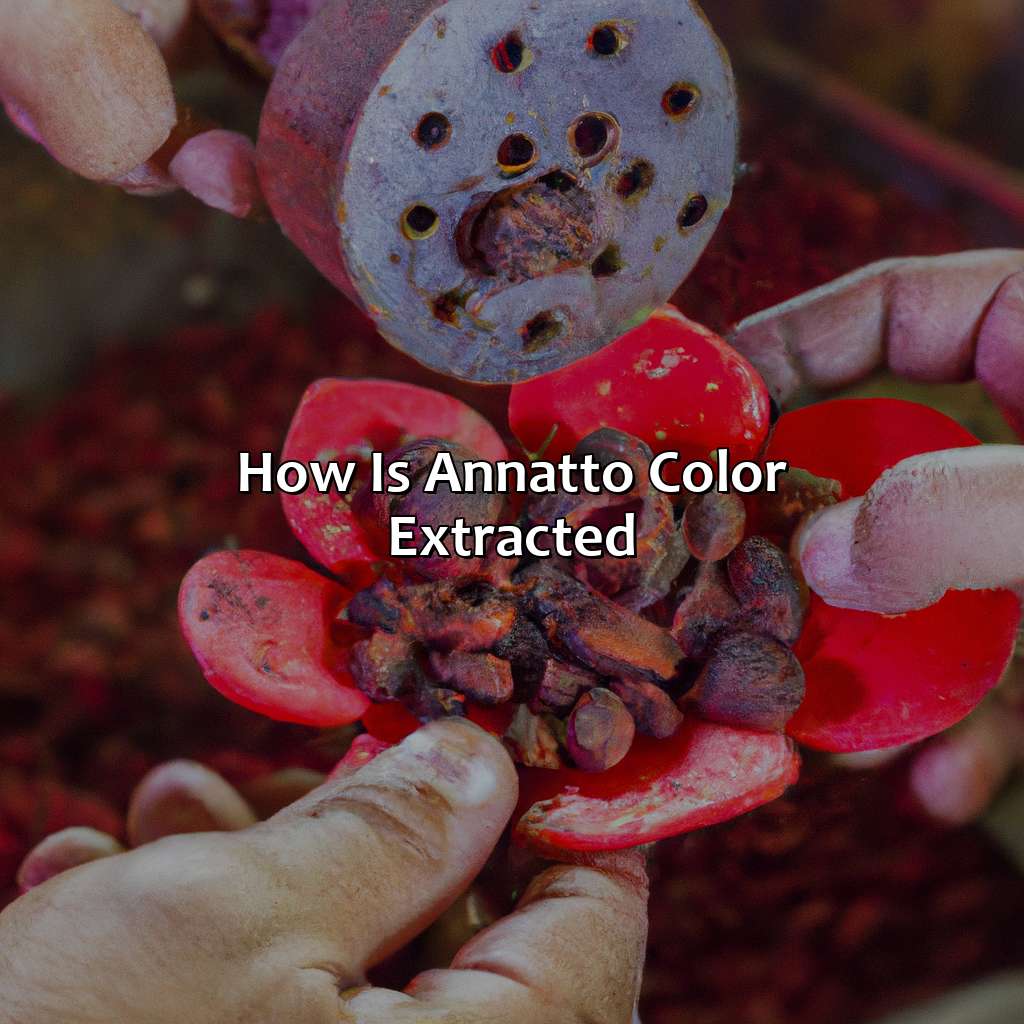
Photo Credits: colorscombo.com by Kenneth Lee
Let’s discover the extraction methods and chemical composition of annatto color. It is a natural colorant that must be extracted. We’ll delve into two key considerations: extraction methods and chemical composition. All this to produce annatto color!
Extraction Methods
Annatto color is extracted through various procedures that differ in techniques and equipment utilized. The liquid bixin extraction method is carried out using solvents such as ethanol, acetone or hexane while the oil-based method employs vegetable oil or other types of edible oils. In the water-based extraction technique, hot water extracts annatto seeds to produce a reddish-orange dye.
| Extraction Methods | Description |
|---|---|
| Liquid Bixin Extraction | Solvent-based approach using ethanol, acetone, or hexane. |
| Oil-Based Extraction | Method employing vegetable oil or other kinds of edible oils |
| Water-Based Extraction | The hot water extraction yields orange-red colored annatto dye. |
Extraction methods differ depending on the desired concentration of Annatto color. These techniques utilize different solvents and oils and variations in time and temperature.
Studies show that the efficiency and composition of extracted pigment vary with specific processing parameters like solvent concentration, time duration, temperature, pH levels, and sample-ground size.
Research carried out by ‘Adefegha et al.’ illustrates that despite its antioxidative properties, consumption of Annatto color at high doses causes oxidative stress-related disorders such as DNA damage in animals.
One true fact about Annatto extracts is that “The United States Food and Drug Administration have declared annatto as a safe coloring agent for human consumption.”
The chemical composition of Annatto Color is as complex as a Kardashian relationship.
Chemical Composition of Annatto Color
Annatto color is composed of various chemical compounds responsible for its unique color and properties. These compounds include norbixin, bixin, and other carotenoids, tocotrienols, tocopherols, and fatty acids.
The chemical composition of annatto color can be represented through a table as shown below:
| Chemical Compound | Function |
|---|---|
| Norbixin | Main pigment responsible for yellow to orange-red colors |
| Bixin | Co-pigment with norbixin |
| Carotenoids | Enhances the color intensity |
| Tocotrienols | Acts as an antioxidant |
| Tocopherols | Prevents oxidation |
| Fatty Acids | Increases stability |
Unique details about the chemical composition of annatto color also include its fat-soluble nature, making it highly compatible with certain food systems such as dairy products.
Explore the possibilities of incorporating annatto color into your daily life to experience its unique benefits and properties. Don’t miss out on this versatile ingredient!
Annatto color not only adds vibrant hues to foods and cosmetics, but also packs a punch with its antioxidant and anti-inflammatory properties for potential health benefits.
Health Benefits of Annatto Color
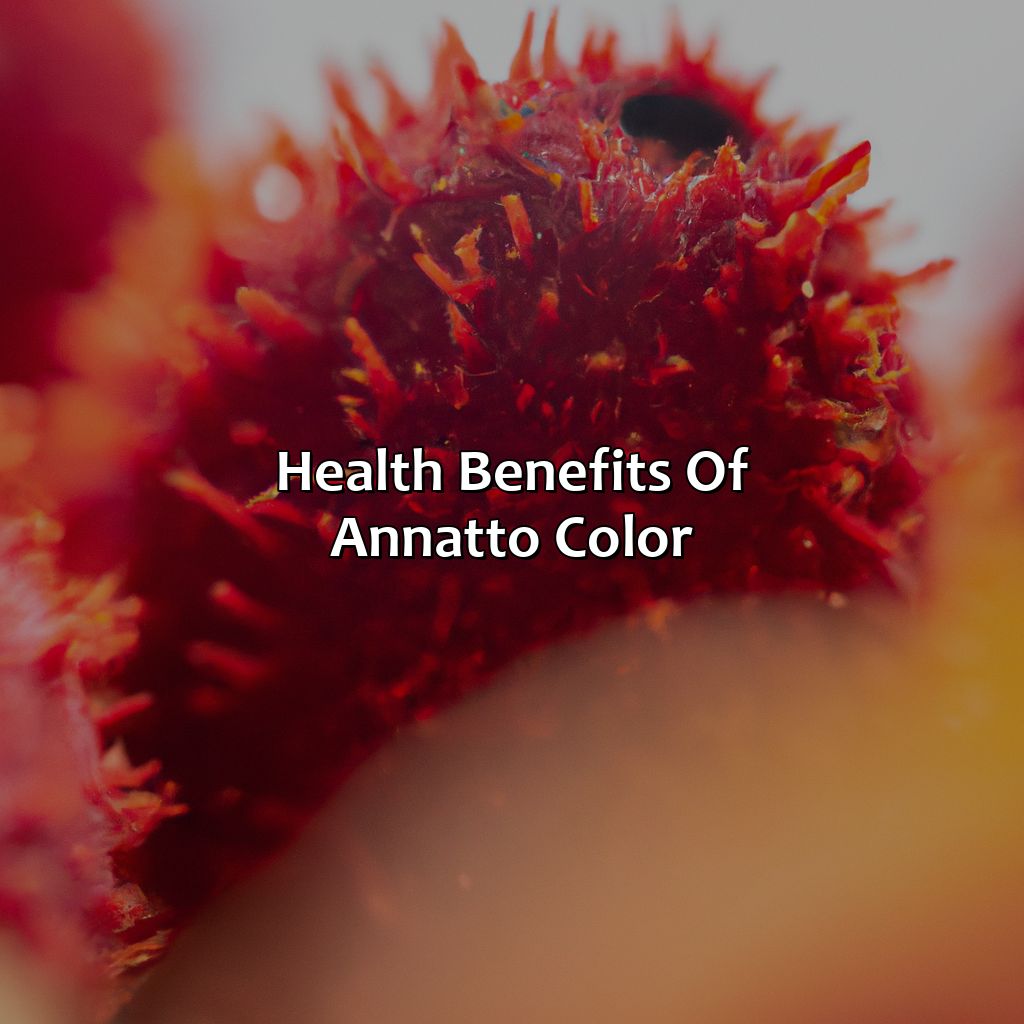
Photo Credits: colorscombo.com by Elijah Hall
Maximize health benefits from annatto color! Check out the “Health Benefits of Annatto Color” section. It has two sub-sections:
- “Antioxidant Properties of Annatto Color”
- “Anti-inflammatory Properties of Annatto Color.”
Learn about annatto’s medicinal properties! It has strong antioxidant and anti-inflammatory effects.
Antioxidant Properties of Annatto Color
Annatto color possesses several antioxidant properties that make it a promising health-promoting ingredient. Its ability to scavenge free radicals and its high content of carotenoids contribute to its antioxidant potential. Research also suggests that annatto color can help inhibit lipid peroxidation, reducing the risk of chronic conditions associated with oxidative stress.
The natural pigments present in annatto color are highly effective in combating oxidative stress, which is implicated in several diseases. In addition to its antioxidant properties, annatto extracts contain certain phenolic compounds that offer additional health benefits. These compounds have been reported to possess anti-inflammatory and anticancer activities.
Studies show that consuming food products containing annatto color can improve overall health by reducing inflammation and the risk of cancer and cardiovascular diseases. Evidence also indicates that topical application of annatto extract can improve skin health by preventing oxidative damage induced by UV radiation.
Consumers looking for natural alternatives to synthetic antioxidants can consider using annatto color as a safe and effective option.
Incorporating annatto color into your diet or skincare routine can provide numerous antioxidative benefits, improving overall health inside and out. Don’t miss out on the potential benefits of this overlooked ingredient! Annatto color: relieving inflammation one hue at a time.
Anti-inflammatory Properties of Annatto Color
Studies have shown that Annatto Color has anti-inflammatory properties, making it a promising candidate for inflammation-related diseases. The natural coloring agent has demonstrated the ability to reduce inflammation at a cellular level, indicating potential for therapeutics. Inflammation is an innate immune response and responsible for various disorders such as arthritis, ulcerative colitis, etc.
Annatto Color’s anti-inflammatory properties are owing to its active compounds, tocotrienols and carotenoids, which facilitate the lipoxygenase pathway inhibition, thereby reducing inflammation. It regulates key molecules implicated in inflammatory processes by targeting cytokines, transcription factors, and enzymes involved in the downstream effects of inflammatory signaling pathways.
Annatto Color is still being studied for fully understanding its mechanism of action compared with other popular compounds used to treat inflammation. However, researchers have pointed out that Annatto Color possesses unique advantages over these compounds due to its antioxidant profile.
A recent case report observed significant improvement in joint pain after supplementing with Annatto-derived vitamin E tocotrienols daily. Tocotrienol supplementation was associated with reduced morning stiffness and higher hand-grip strength compared to those taking placebo tablets.
Inflammation being one of the most widespread health issues could benefit from ongoing researches on functional food agents like Annatto color to help prevent and manage inflammatory disorders safely without side effects seen from drugs like Nonsteroidal anti-inflammatory drugs (NSAIDs).
Annatto Color: The versatile pigment that adds color to your life, and potentially, years to your health.
Summary of Annatto Color
Annatto Color is a natural colorant obtained from the seeds of the tropical plant Bixa orellana. It has been used for centuries in various industries, including food and cosmetics, due to its vibrant colors and health benefits.
Here is a summary of Annatto Color:
| Definition | Uses |
|---|---|
| Natural colorant obtained from Bixa Orellana. | Food and cosmetic industries. |
| Extraction Methods | Solvent Extraction or Water-based Extraction. |
| Chemical Composition | Bixin and NorBixin. |
| Health Benefits | Antioxidant and Anti-inflammatory properties. |
Further details on the safety concerns related to Annatto Color in both food and cosmetic industries have been discussed in previous sections. However, it is noteworthy that despite its widespread use, Annatto Color can cause allergic reactions in some individuals if consumed in large amounts.
Incorporating small amounts of Annatto Color into your diet or skincare routine can have multiple benefits without causing any harm. Additionally, choosing natural sources of food coloring such as Annatto over synthetic ones also has environmental benefits as they reduce pollution levels.
Future Prospects of Annatto Color.
With the increasing demand for natural colorants, the future prospects of Annatto Color seem bright. The extensive use of Annatto Color has created a very positive impact on the food and cosmetic industry. Due to its high antioxidant and anti-inflammatory properties, it can be used as a healthy replacement for synthetic colorants.
One such exciting application is utilizing Annatto Color in developing biodegradable packaging films. These films will not only preserve the freshness of food products but also reduce plastic waste, leading to safer and more sustainable environmental practices. This endeavor functions towards ensuring zero waste management and establishing a Sustainable Development Goal.
To effectively promote the future prospects of Annatto Color, research teams must conduct comprehensive experiments regarding its further applications like medicinal extracts, pharmaceutical injectables, and more. These initiatives will reveal new prospects, making it possible to explore multiple industries and positively impacting global society with healthier alternatives.
Five Facts About Annatto Color:
- ✅ Annatto color is derived from the seeds of the achiote tree, which is native to tropical regions in Central and South America. (Source: Healthline)
- ✅ In food, annatto color is used as a natural colorant to give a yellow or orange hue to various dishes, including cheese, butter, and sauces. (Source: The Spruce Eats)
- ✅ The use of annatto color dates back to ancient civilizations such as the Maya and Aztecs, who used it for medicinal and cosmetic purposes. (Source: Britannica)
- ✅ Annatto color has been used as a natural dye for textiles, and in cosmetics as a tint for lipsticks and eyeshadows. (Source: The Klog)
- ✅ Annatto color may have health benefits, such as antioxidant and anti-inflammatory properties, and potential for cancer prevention. (Source: Verywell Fit)
FAQs about What Is Annatto Color
What is annatto color?
Annatto color is a natural food coloring derived from the seeds of the achiote tree, which is native to Central and South America.
What foods is annatto color commonly found in?
Annatto color can be found in a wide variety of processed foods including cheese, butter, margarine, snack foods, cereals, and baked goods.
Is annatto color safe to consume?
Yes, annatto color is generally recognized as safe (GRAS) by the US Food and Drug Administration (FDA) and has been used in food products for centuries.
What benefits does annatto color have?
Apart from providing an attractive orange-yellow color to foods, annatto color has been linked to several potential health benefits including anti-inflammatory, anti-oxidant, and antimicrobial properties.
Can annatto color cause allergic reactions?
While rare, some people may experience allergic reactions to annatto color. Symptoms can include hives, itching, or difficulty breathing.
Is annatto color vegan-friendly?
Yes, annatto color is vegan-friendly as it is derived from plant sources and does not contain any animal products.
